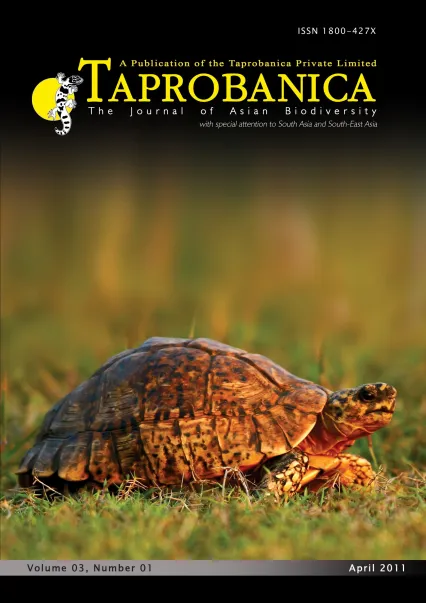

v3i1.40
Volume 3 | Number 1 | May 2011
Major Article
ISSN: 1800-427X (print)
eISSN: 1800-427X (online)
DOI:10.47605/tapro.v3i1.40
Submitted date: 28 February 2011
Accepted date: 13 July 2011
Published date: 30 July 2011
Pp. 18–30.
BENTHIC MACRO-INVERTEBRATE FAUNA AND “MARINE ELEMENTS” SENSU ANNANDALE (1922) HIGHLIGHT THE VALUABLE DOLPHIN HABITAT OF RIVER GANGA IN BIHAR - INDIA
Hasko Nesemann, Gopal Sharma* & Ravindra K. Sinha
*Corresponding author. E-mail: gprszsipatna@rediffmail.com
Abstract
From the main channel of River Ganga 95 invertebrate taxa have been recorded in the endangered Gangetic Dolphin (Platanista gangetica) habitat over an observation period of ten years. Mollusks, Annelids and Arthropods are the dominating benthic groups that constitute the detritivores, filter-feeders and sediment feeders, scrapers/grazers and herbivores. The benthic sediment fauna is rich in diversity and high in abundance. This enables carnivores to occupy a large variety of specialized ecological niches. The qualitative faunal composition of Ganga resembles in general large European rivers with similar representation of taxa. Twelve taxa of marine-originated families were identified, but none of them can be classified as invasive or non-indigenous species. Only two taxa are certainly recognized as non-indigenous neozoans, whereas the remaining fauna shows pristine and stable ecological conditions. In this aspect River Ganga differs from regulated large rivers, where faunal change has largely replaced the original species inventory. Despite the heavy pollution in parts of the river, the original composition of biological diversity is still persisting in the middle reaches of the Ganga. This provides hope for the survival of the Gangetic Dolphin.
Key words : Aquatic, invasive species, functional feeding groups, Gangetic Dolphin
Section Editor: Remadevi
eISSN: 1800-427X (online)
DOI:10.47605/tapro.v3i1.40
Submitted date: 28 February 2011
Accepted date: 13 July 2011
Published date: 30 July 2011
Pp. 18–30.
BENTHIC MACRO-INVERTEBRATE FAUNA AND “MARINE ELEMENTS” SENSU ANNANDALE (1922) HIGHLIGHT THE VALUABLE DOLPHIN HABITAT OF RIVER GANGA IN BIHAR - INDIA
Hasko Nesemann, Gopal Sharma* & Ravindra K. Sinha
*Corresponding author. E-mail: gprszsipatna@rediffmail.com
Abstract
From the main channel of River Ganga 95 invertebrate taxa have been recorded in the endangered Gangetic Dolphin (Platanista gangetica) habitat over an observation period of ten years. Mollusks, Annelids and Arthropods are the dominating benthic groups that constitute the detritivores, filter-feeders and sediment feeders, scrapers/grazers and herbivores. The benthic sediment fauna is rich in diversity and high in abundance. This enables carnivores to occupy a large variety of specialized ecological niches. The qualitative faunal composition of Ganga resembles in general large European rivers with similar representation of taxa. Twelve taxa of marine-originated families were identified, but none of them can be classified as invasive or non-indigenous species. Only two taxa are certainly recognized as non-indigenous neozoans, whereas the remaining fauna shows pristine and stable ecological conditions. In this aspect River Ganga differs from regulated large rivers, where faunal change has largely replaced the original species inventory. Despite the heavy pollution in parts of the river, the original composition of biological diversity is still persisting in the middle reaches of the Ganga. This provides hope for the survival of the Gangetic Dolphin.
Key words : Aquatic, invasive species, functional feeding groups, Gangetic Dolphin
Section Editor: Remadevi
- List of Articles & Contents





